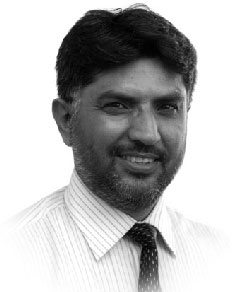Quantity assurance in higher education
IMPORTANCE of Quality Higher Education in the country is being debated these days on various fora.
As the Higher Education Sector is responsible to produce new knowledge through various post-graduate and research projects carried out in the universities & degree awarding institutions.
The new knowledge in various domains is the catalyst for the economy especially during the 21st Century because our decision-making is more relying on data, information and knowledge produced by the higher education institutions (HEIs).
It helps in finding a solution to the current problems being faced by individuals, organizations and society. The people in Medical, Engineering, Computing and other Social Sciences are focusing on Data Sciences and use of Artificial Intelligence to support decision making at all levels.
The Higher Education Commission (HEC) was established in 2002 to improve access to the higher education, develop quality culture in academics and research domains and focus on relevance of all educational activities to the national goals.
All this is to be achieved through formulating policies, guidelines and criteria for HEIs on a regular basis along with strong implementation mechanism which should be in line with the letter and in spirit of these policies.
To achieve these goals, the Commission had laid down various criteria like Faculty Appointment Criteria wherein the major focus was on acquiring the highest qualification i.e. Ph.D. in the particular field and a certain number of publications along with the number of years as experience.
The critics these days are objecting to the number of publications versus their real impact on the society.
The matter is debatable, but as far as research culture is concerned, it was limited to a few HEIs and organizations.
Initially, there was no such requirement in place, the purpose was to compel stakeholders for focusing on creativity, problem solving approach and knowledge generation.
The requirement of number in the criteria was introduced to measure the performance of the faculty members in a uniform manner.
Further, the universities are expected to align these standards with their local demand in terms of relevance when applications of candidates against teaching positions are scrutinized.
The Government Ministries, Departments and various donor organizations including World Bank, Asian Development Bank, etc require information about the sector in numbers like how many numbers PhDs are there in Sciences and Social Sciences? How many publications are produced by each university? Keeping these demands in view, the whole system was created to reflect progress on a quantity basis for transparency and uniformity.
The relevance which is a basic ingredient for assessing impact was left for the Universities to decide and implement.
For example, if a university is interested to hire the services of an individual for the post of Professor, the HEC minimum requirements are PhD. Qualification in the relevant discipline, 15 years of teaching or work experience in universities or research & development (R&D) organization(s) and 15-number of publications in a relevant discipline.
It is expected that the relevance of the subject or discipline can be better determined through Scrutiny Committee which comprises subject experts.
These were the minimum guidelines and the same can be made stringent by the universities but, unfortunately, some institutions have tried to favour a few individuals by relying on these minimum requirements for the appointment of professors.
Resultantly, the peer universities have followed same practices and just focused on the number of publications or years of experience only. Actually, they were supposed to assess the relevance factor for both ie publications and experience.
Further, for promoting research culture in the universities, HEC provided funds to local research journals for developing platform at par with international standards like the impact factor (web of science) for the visibility of research at international and national level.
The impact Factor is again based on numbers ie number of citations made in two years divided by the number of publications made during the same period.
These are the acceptable measuring mechanisms world over and are devised for uniform assessment of research quality. There may be other ways to assess the quality of the research as well.
The HEC has developed standards for evaluation of institutional performance which are again being assessed on the basis of numbers.
The International University Rankings, which are widely accepted in all countries are mostly dependent on numbers i.e. Number of Foreign Students, Number of Ph.D. Programs, No of Research Grants, etc.
The universities which meet or exceed these standards are ranked accordingly at the international, national and subject level.
The efforts of HEC were acknowledged in the report titled “Pakistan: Another BRIC in the Wall” by Thomson Reuters in 2016. The report was based on the performance of HEIs in terms of publications made during 2005-2015.
The report mentioned that Pakistan has emerged as the country with the highest percentage of highly cited papers in comparison with the BRIC countries ie Brazil, Russia, India and China.
All that was possible due to the quantity of the papers.The quality and quantity both are linked with each other and cannot be separated.
To achieve quality, one must develop standards that can be measured in numbers and the same can be further interpreted from a quality or impact perspective. In this regard, not only HEC as well as all other stakeholders including HEIs must positively play their role.
It is the right time to focus more on aligning our research preferences with energy crisis, urban transportation, food security and other such strategic domains.
—The writer is Deputy Director at Higher Education Commission, Islamabad.










